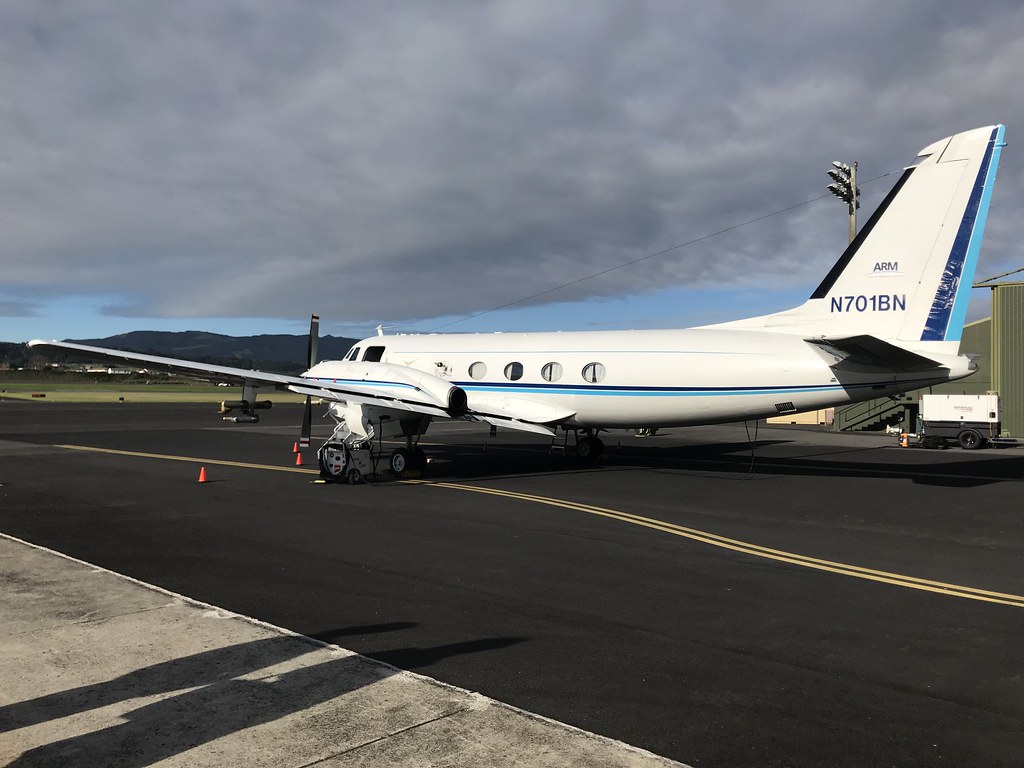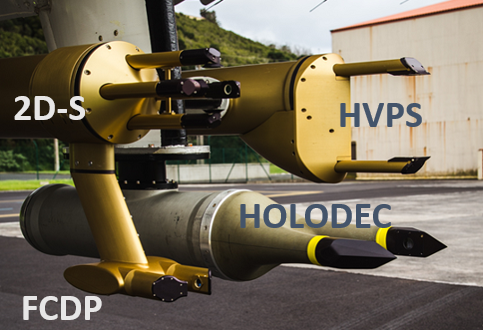Marine Stratocumulus Clouds Seem to Consist of Neighborhoods of Relatively Uniform Properties
Published: 23 May 2024
Researchers show common reflective clouds are not spatially homogenous

In a May 2024 article published in Science, scientists from Michigan Technological University, the College of Charleston, and Pacific Northwest National Laboratory in Washington state explore long-held assumptions about the microphysical structure of marine stratocumulus clouds. In the study, they show that droplet size distributions are locally narrow and the commonly assumed broad gamma droplet size distributions (predicted generalized distributions based on droplet shape and dispersion) only develop when averaging over large volumes of the cloud.
This finding has important implications for the accuracy of global climate models. Marine stratocumulus clouds are often termed “global reflectors” because of the amount of energy they send back to space. Inaccurate averaging of their microphysical processes in model parameterizations, which are simplified representations of the complex interactions of atmospheric variables, can introduce errors into calculation of their drizzle rate, which eventually influences radiative effects.
The research, funded by the U.S. Department of Energy’s Atmospheric System Research (ASR) program and the National Science Foundation, relied on analysis of holographic images from a digital cloud imaging instrument—the holographic detector for clouds, or HOLODEC—first developed at Michigan Tech. It is a cloud probe that takes a snapshot, or hologram, of a sample volume and gives three-dimensional (3D) locations and two-dimensional (2D) images of detected droplets.
The National Center for Atmospheric Research’s Earth Observing Laboratory provided the HOLODEC used in this study. It was attached to the Atmospheric Radiation Measurement (ARM) user facility’s now-retired Gulfstream-159 (G-1) research aircraft.
Researchers analyzed HOLODEC data from low-level marine stratocumulus clouds near the Azores island chain during ARM’s 2017–2018 Aerosol and Cloud Experiments in the Eastern North Atlantic (ACE-ENA) field campaign. ACE-ENA sought to better characterize low-level marine clouds and associated aerosol and atmospheric boundary-layer properties.
Insights Into Cloud Droplets

Cloud measurements made with the HOLODEC included locally sampled cloud droplet size distributions in volumes of 10 cubic centimeters (.6 cubic inches) at regular intervals as the G-1 moved through a cloud. This is much tighter sampling than the 10- to 100-meter (32.8- to 328-foot) averaging scale typically used for measuring droplet size distributions in the air.
Researchers investigated data from horizontal cloud transects at constant altitudes and over length scales that approached the typical grid box length scales of global climate models for four ACE-ENA flights, covering a range of cloud conditions. The goal was to ascertain the structure of droplet size distribution, or how droplets of different sizes were distributed throughout the cloud.
To determine whether the local droplet size distributions resembled each other and the average of these local distributions, the scientists then employed an algorithm they developed using hypothesis testing and machine learning clustering. The answer was that though parts of a cloud can resemble other parts, local droplet size distributions generally do not look like the broad, cloud-averaged values that are often used in models.
In an overwhelming majority (30 out of 31) of the cloud transects analyzed, the scientists identified multiple locally characteristic size distributions. This suggests that the overall cloud size distribution formed by combining all droplets in a given cloud segment can be broken down into multiple characteristic distributions.
The clustering behavior that the researchers discovered implies that similar-looking holograms do not appear at random but rather appear in zones with similar microphysical properties. The results demonstrate the existence of local-scale characteristic distributions in stratocumulus cloud systems. These distributions are narrower, with distinguishable sub-distributions, and differ considerably from the cloud-averaged distributions.
The differences between the characteristic distributions can reveal important information about cloud microphysical properties that a global-averaged (or cloud-averaged) representation does not show. Such information can help improve cloud representations in models.
You can read more about the HOLODEC and ACE-ENA in a blog by Susanne Glienke, a scientist at Pacific Northwest National Laboratory and a co-author of the Science paper.
Keep up with the Atmospheric Observer
Updates on ARM news, events, and opportunities delivered to your inbox
ARM User Profile
ARM welcomes users from all institutions and nations. A free ARM user account is needed to access ARM data.


















